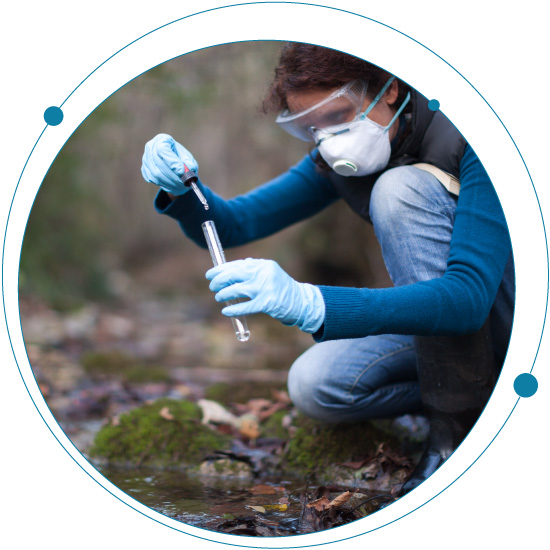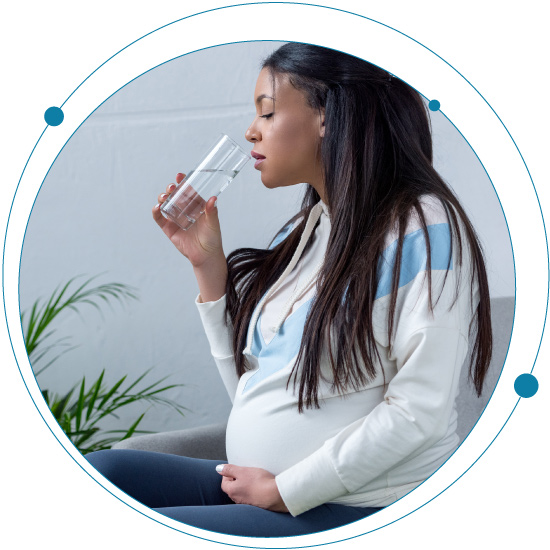As an ever-expanding group of chemicals, per- and polyfluoroalkyl substances (PFAS) require novel techniques to monitor their current and historical presence in the environment. Concerns over exposure to PFAS chemicals continue to grow, with some having known toxic characteristics and the potential effects of others remaining unknown.1 In addition, while PFAS are one of the most persistent synthetic chemicals to date, most of them hardly degrade in the environment.2 So, how long do traces of PFAS last in our environment? Two tools used to help answer this question are active samplers and passive samplers.
Tags
PFAS testing: 2024 in review and what to expect for 2025
For as long as PFAS persist in the environment, there is no doubt they will persist in our conversations as environmental scientists. Globally, PFAS contamination has been detected in water supplies, soil and even in the blood of people and wildlife. Different countries are at various stages of addressing PFAS contamination and many governments have set regulatory limits and are working on assessing the extent of contamination, cleaning up affected sites and researching safer alternatives.

Understanding PFAS and its impact on U.S. drinking water
In recent years, per- and polyfluoroalkyl substances (PFAS), often referred to as “forever chemicals,” have become a growing topic of interest due to their persistence in the environment and potential health risks. These synthetic compounds have been widely used in various industrial applications and consumer products since the 1940s. PFAS can be found in the air, soil, and water, and studies have shown that most people have detectable levels of PFAS in their bloodstream. One of the main exposure pathways for humans is through drinking water, particularly in communities located near industrial sites, military bases, or areas where firefighting foam has been used.
The secrets of recycling: PFAS and 6PPD
Recycling and reusing items is generally accepted as the “right” thing to do. But what if there were unintended, negative consequences to recycling? For example, old car tires are often ground down and reused for synthetic turf, with roughly 40,000 tires used per field.1 However, car tires contain the chemical 6PPD,5 which is converted by ozone to a quinone compound 6PPD-quinone (6PPD-Q) and enters river systems where it is toxic to coho salmon. In addition, some studies have detected per- and polyfluorinated alkyl substances (PFAS)— the” forever chemicals”—in artificial turf,1,4 which means it may be a source of PFAS found in nearby water supplies and potentially in drinking water.

Telling the PFAS story with pine needles
As an ever-expanding group of chemicals, per- and polyfluoroalkyl substances (PFAS) require novel techniques to monitor their current and historical presence in the environment. Concerns over exposure to PFAS chemicals continue to grow, with some having known toxic characteristics and the potential effects of others remaining unknown.1 In addition, while PFAS are one of the most persistent synthetic chemicals to date, most of them hardly degrade in the environment.2 So, how long do traces of PFAS last in our environment? Two tools used to help answer this question are active samplers and passive samplers.

The hidden ingredient in anti-fog sprays: PFAS
A recent study led by researchers from Duke University, conducted with colleagues from Wayne State University and the University of North Carolina at Charlotte, found that four of the top-rated anti-fog sprays contained up to 20.7 milligrams of per- and polyfluoroalkyl substances (PFAS) per milliliter of solution. This study has received a lot of exposure in popular media, and it should not be overlooked. The researchers used several creative approaches to obtain a comprehensive characterization of the anti-fog sprays, including using total organic fluorine measurements, GC-MS methods and both nominal mass and accurate mass instruments. A unique finding of the study was the detection of fluorotelomer ethoxylates (FTEOs), which are relatively unknown PFAS compounds.

PFAS testing: solid phase extraction vs. direct injection methods
US Environmental Protection Agency (EPA) and Department of Defense (DoD) methods for testing per- and polyfluoroalkyl substances (PFAS) in drinking water require using solid phase extraction (SPE). SPE has been used extensively in environmental contaminant analysis both for concentrating large sample volumes (improving method sensitivity) and removing matrix interferences (sample cleanup).

Should you bring your PFAS testing in-house?
As the per- and polyfluoroalkyl substances (PFAS) regulatory landscape evolves in the US and across the globe, the interest in PFAS continues to grow. Drinking water and food packaging are under particular scrutiny, and monitoring programs and requirements will continue to expand to include an increasing variety of sample types and PFAS compounds.

Top questions about the exposome of PFAS revealed
According to the CDC, the exposome is “the measure of all the exposures of an individual in a lifetime and how those exposures relate to health.”

Meet regulatory limits: Characterize and quantify PFAS and GenX in water using liquid chromatography-mass spectrometry
Per- and polyfluorinated alkyl substances (PFAS) continue to persist throughout the environment.Concerns about the health dangers posed by these contaminants, along with the possibility of biological toxicity of legacy PFAS such as perfluorooctanoic acid (PFOA) and...

Environmental scientists: Why the SCIEX X500R QTOF system is perfect for PFAS research
The world of per- and polyfluoroalkyl substances (PFAS) research is a big one and one that’s currently front and center in environmental contamination concerns. Whether you work in industrial or academic environmental research, the issues surrounding these...
No Results Found
The page you requested could not be found. Try refining your search, or use the navigation above to locate the post.
No Results Found
The page you requested could not be found. Try refining your search, or use the navigation above to locate the post.